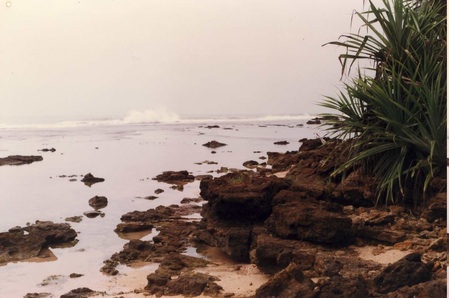
It’s not much more than a thick hook of land tucked under Java’s jaw, located a couple of hundred kilometers south of Jakarta. But it’s within striking distance of the infamous Krakatoa island volcano, and it was a compelling destination and a journey representative of most of the trips I made in Indonesia.
First, you had to get a pass to enter the Ujung Kulon park, since it’s technically a national reserve. Then you had to hire a guide at whatever price you negotiated. Then the guide takes you to the corner store so you can stock up on food for both you and reminds you that you are required to buy him a couple packs of kretek clove cigarettes, too. Wait, what’s the deal, here? Then you set off to hike.
Continue reading "Ujung Kulon"
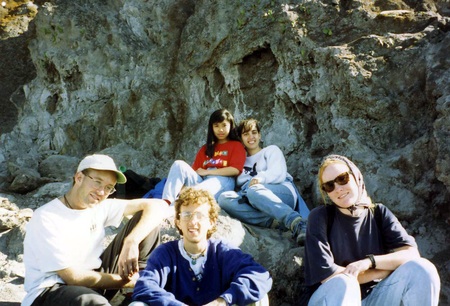
We were four friends: teachers gathered from all over the United States in order to teach at the Universitas Atma Jaya in Yogyakarta, Indonesia. And despite differing backgrounds and differing personalities, we all got along with each other so well we were able to share a few adventures together. Scaling Mount Merapi was one of them.
At 2950m, Mount Merapi (“the mountain that blows fire”) is one hell of a volcanic peak, and though it was calm other than the occasional rumble the entire time I lived in Indonesia, it erupted five months after I left Indonesia. It has gone on to blow its top several times since then, destroyed dozens of villages and hundreds of lives, and generally lived up to its name: eruptions in 2006 and 2010 killed hundreds and displaced hundreds of thousands. It's essentially in a state of continuous eruption or activity. During the two years I’d learned about Indonesia and studied Bahasa, I’d come to understand Indonesians almost without exception are born, live, and die within sight of a volcano. Merapi, which dominates the northern skyline of Yogyakarta, would be mine in 1993 and 1994.
Continue reading "Kaliurang and Merapi"
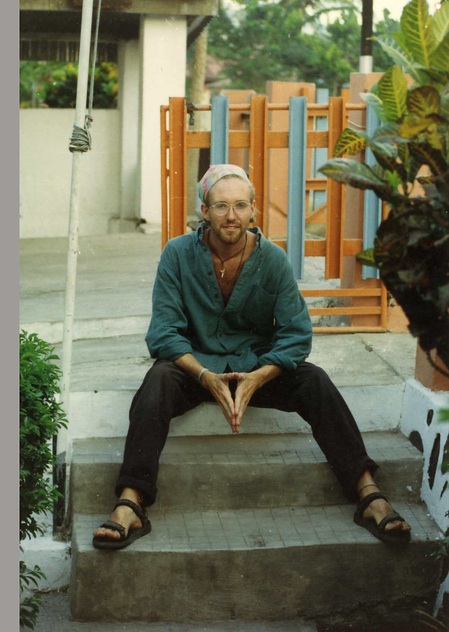
Five hundred years ago the people of Bima, Sumbawa grew crops in volcanic soil, built small fishing boats out of hard wood, and traversed the Indonesian archipelago under lateen sail in search of fish. In 1993 when I visited them, they still did. Sumbawa is fascinating, lying at a "transitional point between the Indianized 'high' cultures of Western Indonesia and the traditional pagan cultures of eastern Indonesia."
I had traveled eastward down the Nusa Tenggara from Jakarta, crossing Java, Bali, and Lombok, and in Bima I was interested in boat schedules for a Pelni ship that would take me back west to where a job and my next adventure awaited me. But Sumbawa was too good to resist - even the name was delicious on the tongue. Sumbawa is rough, rumpled, mountainous, and in 1993 at least it was delightfully untouristed. From bus windows I saw not entreaties for foreign visitors but simply farmers and fishermen doing what they’d always done. The hillsides looked wild, untamed, even unused. The hillsides drew my eyes most easily: steep and parched, draped over the higher summits by dark clouds that seemed unwilling to shed their watery loads. It was no wonder people turned to the sea. Drawing on my own experience in small boats on the Eastern seaboard, Sumbawa’s rumpled coastline looked like a paradise for a small, maritime gunkholer like myself. But Sumbawa was full of fragant sapan and sandalwood timber too, as well as tobacco and lots of grains.
Continue reading "Market Night in Bima, Sumbawa"
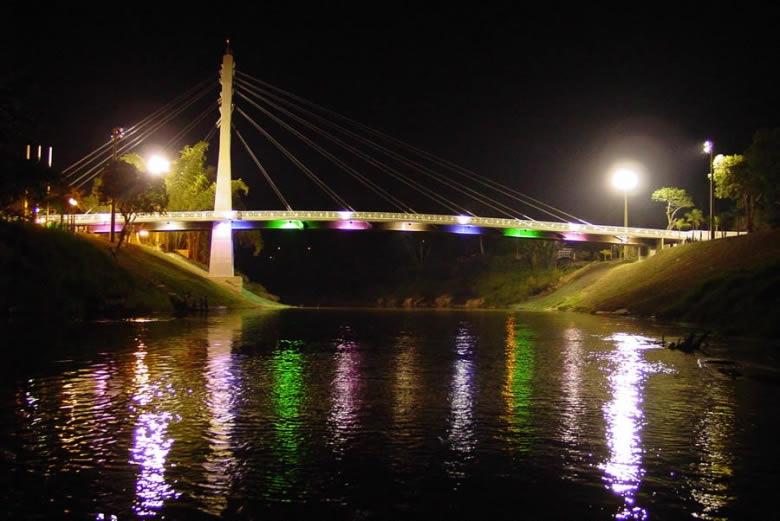
From El Alto, Bolivia down to Cobija we drifted downward from the Altiplano like a butterfly, and landed in a new world. 100% humidity, 30 degree celsius temperature: it was like I was back in Nicaragua, but greener and wetter. The earth smelled of wet clay, of vegetation, of burning: the smell of the tropics.
“El Chaqueo” explains Rodrigo, who picks me up at the airport. I struggle to get my luggage, which is picked up and lifted into a heavy cargo truck, and then unloaded by hand into a cement corner of the airport, where the crowd jostles forward to see and identify their belongings. I’m there, too. More than half of them are Brazilian: the border is just minutes north of here. Looking around while I wait for my one small bag to appear, I notice the airport is a one room affair, cold concrete painted celeste azul (what is with tropical countries and that color?) and a series of round, thatched roofs that march upward in concentric circles, lashed with bamboo.
Continue reading "Gas in Bolivia, Steaks in Brazil"
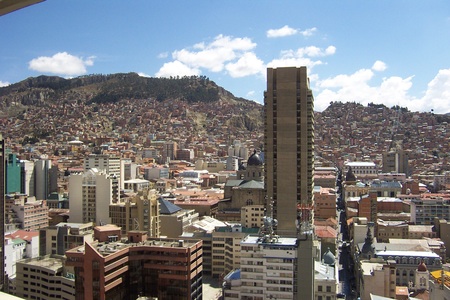
I managed the pre-dawn arrival to La Paz despite being wedged in the middle class of an economy class seat between two weirdos. The first woman was terrified of flying and threw a blanket over her head and trembled the whole way. The other woman was clearly on drugs. Commercial flights are the worst.
La Paz was exhausting and stunning. So high up! And I wound up in a 5th floor hotel room that took me even higher. I’d been warned about altitude sickness and had come armed with some gingko biloba drops, but never really needed them. In fact, the only time I ever really noticed anything was when I stood up quickly to rush for the elevator and arrived feeling winded. The air is thin up there, after all.
Continue reading "La Paz, Bolivia"
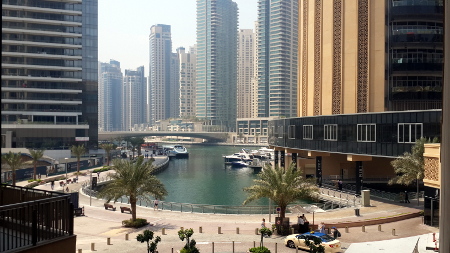
It was late 1992 and all my thoughts were on graduation and the wide world that awaited me; even Ithaca was starting to seem small and I was itching to finish my formal education and get out into the world for some “informal education.” Evenings I took my passport from the drawer and examined it, took my backpack out from the closet and walked around wearing it, testing, probing. In my journal I listed places I’d like to see, adventures I wanted to experience, and laid out my hope that I’d travel far and wide, and my fear that I wouldn’t.
I read those old journal entries again for the first time in ages. And to my immense satisfaction, I read them while visiting Dubai. Imagine, the Gulf States, drenched in Arabic lettering and the architecture of the Middle East. Better still, I’d gotten there from Uganda, our new home. Better still, I’d soon be returning to a wife I met in Central America and kids raised in Francophone Africa. How immense is the world, and how endlessly fascinating and satisfying.
The same could be said of Dubai.
Continue reading "Dubai"
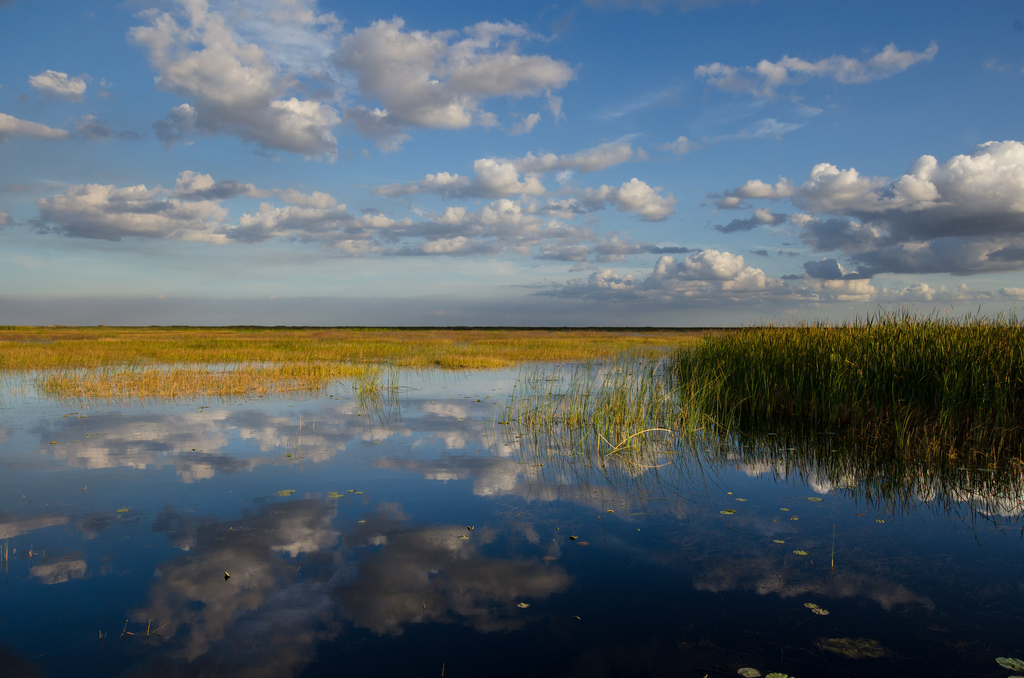
I had a Saturday free and decided to get out and do some hiking, South Florida style. That is: at risk of being chomped by a 'gator, in land only marginally drier than the swamp from which it emerged.
Lake Okeechobee was my first destination: it draws your eye inexorably as you gaze upon the southern half of Florida, and around it was a massive earthen dike with a hiking trail at its top. Built in the early part of the 21st century to control the sloshing floods of Lake Okeechobee, it thoughtfully included a hiking trail that permitted you to essentially circumnavigate Lake Okeechobee if you had enough time, stamina, and a decent rain jacket. The thing is perfectly flat, like tracing a doughnut. In fact, the lake's low profile is behind the flooding: it's basically a shallow lens of water, that passing hurricanes and storms were able to coax into sloshing up and over the low rim and into the surrounding farmland.
Continue reading "Hiking the Rim of Lake Okeechobee"
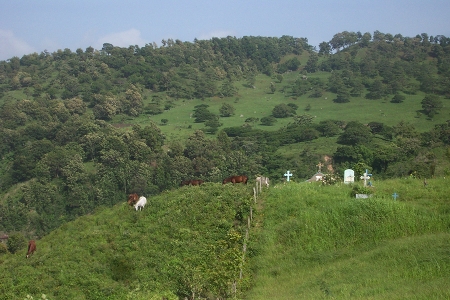
We chose, then, to escape to the North like so many times before. I would make the same journey when I'd needed space in San Diego years before, and I knew the route by heart: it went first to San Sebastian de Yali and then eastward along the mountain ridges to this quiet mountain town in Western Jinotega, where mountains crowded us on all sides and the air blews fresh and cool. For good measure, rains blew in from the West, knocking out the electricity.
So it was that at 7:30 PM, Ericka and I were transported to the previous century. The boarding house of adobe pressed around wooden columns, the meal: refried beans cooked in a heavy pan with onions, some ground beef in spices, flat tortillas toasted over a wood fire, and soft cuajada from some nearby cow.
We ate in near silence, gathered around a small wooden table that a wax candle illuminated in soft orange light. Outside the wooden door, total darkness and the sound of falling rain on the muddy streets. One hundred years ago, in the years before even General Sandino stalked these hills with his armed men, life here was little different at all.
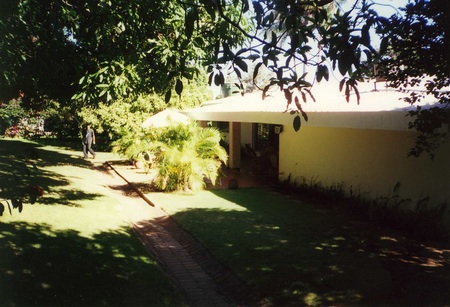
July, 2003: A violent sun that thrusts its way through the greenery of Mango and Tamarind trees. Hot air of all sides and no respite from it anywhere, least of all in the house where the fans spin the columns of blistering air through the sala and kitchen. Outside, the parrots in their cages fidget restlessly or nap with their heads under their wings.
I'm passing through shreds of memory of another life I led, not so long ago but so many worlds away – the huge house on a hill in Las Colinas where from the road I glimpse the upper canopy of those immense Mango trees. With shame I recall scolding a man who had been stealing them from a back road by poking the tree with a stick so they'd drop, only to notice I was embarrassing him in front of his young daughter, whom he pushed with him in a wheelbarrow. Why do rich neighborhoods and poor neighborhoods always abut in places like Central America? Sheepishly, I let him have the mangos, remembering I wasn't even going to be able to eat them by myself.
Continue reading "Shreds of Memory: Managua, 2003"
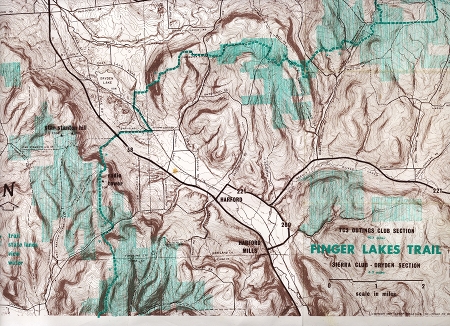
It is one of the most prevalent misperceptions that the purpose of maps is to show you how to get from one place to another. They do serve that purpose, of course. But more importantly, they seduce you into exploring places about which you'd otherwise never have known.
I can understand the lure of GPS units: I use them too, navigating and learning the streets of big cities. And it's tempting to have a battery-operated unit in your hiking backpack that shows you your location in the mountains with a reassuring precision (assuming your unit has batteries, and your bag hasn't fallen into a river, and ...). But when it comes to coaxing you away from home and into new adventure, I find GPS units fail roundly. Just gaze at a big map you've posted on your wall some cloudy morning while you drink your coffee, and see if your boots don't start tapping.
Continue reading "For the Love of Maps"
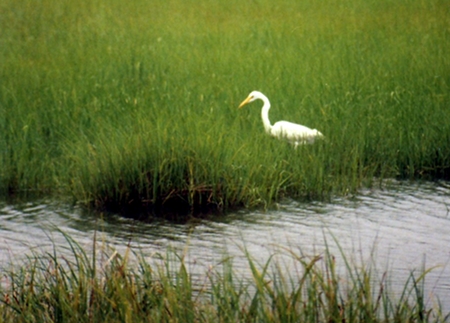
In 1995 I found myself – to my surprise – back in the Hamptons for a summer. And what a lovely summer it was.
With neither job nor job prospect, I spent a lot of late spring and early summer down on the shore armed with a pair of binoculars and the good sense to stay quiet. Here's some of what I saw pecking around at the edge of the Atlantic:
Continue reading "Shorebirds of Long Island"
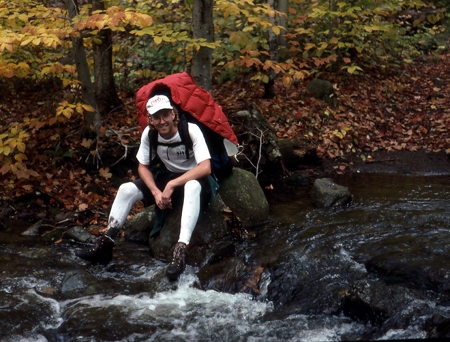
November, 1992: I’d just copied this from The Prophet, by the Lebanese poet Kahlil Gibran:
“And forget not that the earth delights to feel your bare feet and the winds long to play with your hair.”
The correct way to test that hypothesis, obviously, was via a grueling, 50 mile hike through the Adirondacks’ High Peaks region. And as the autumn entered its wan, second half, that’s what we did.
The moon was full the evening before we entered the Adirondack park, after - as usual - a long drive northward and eastward from Ithaca, and a night stuffing as much of Dave’s mom’s fantastic cooking in our bellies as we could. Autumn was becoming early winter, but what we wanted wasn’t green canopy over our heads, but the perfect isolation of wilderness, and a chance to soak in the scents and sounds of the world. With boots laced up and bags strapped on our backs, we set off walking through birches that looked yellow and tired, and set our sights on the far side of the empty woods. Leaves were still falling, but there was more color pooled around our feet than over our heads. Above us, the empty boughs conspired to let in the light of the late autumn moon.
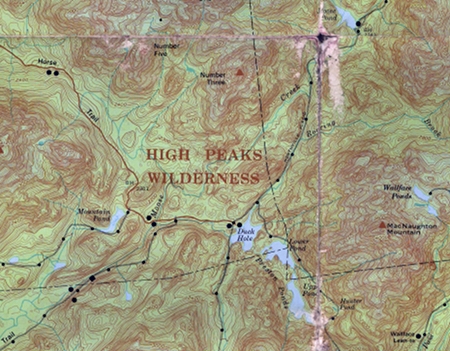 Continue reading "Cold River and Moose Pond: Traverse of the High Peaks Wilderness"
Continue reading "Cold River and Moose Pond: Traverse of the High Peaks Wilderness"
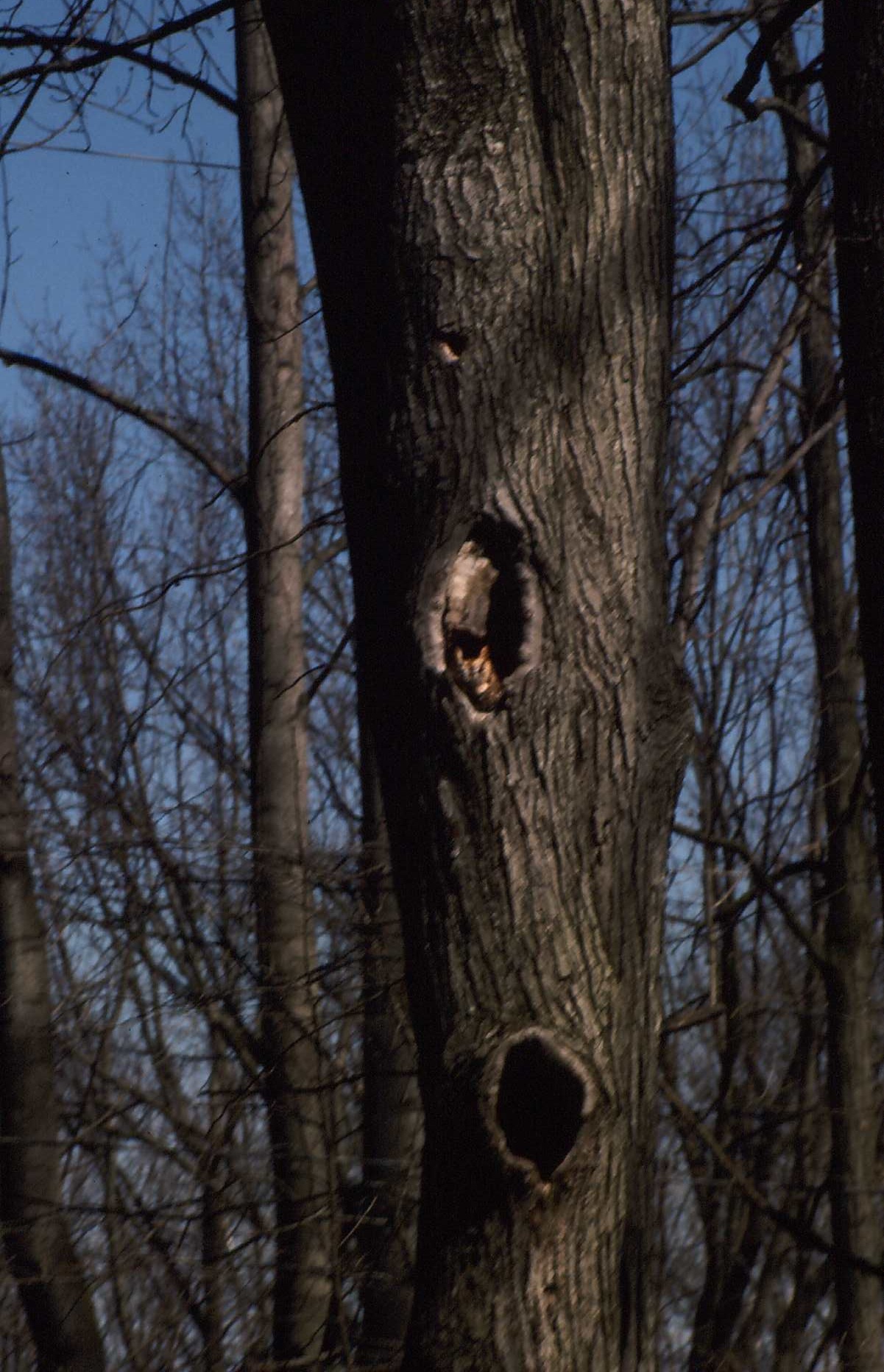
This is a list of birds I spotted in Lititz, Pennsylvania, between June 1994 and March 1995. Not much else remains for me of that long, cold winter. But I do remember the leaves around the lake turning auburn in the fading light of summer, the glass-like warble of the Hermit Thrushes in the forest stand behind the house, the Barn Swallows turning circles in the air, and the acrobatics of the Fly Catcher.
Such is life: a few things we carry with us, but most of it we don't. And time alone is the judge of what mattered and what didn't. Keep singing, little birds. Keep singing.
The picture is of a tree in which a family of Screetch Owls had nested – so amazing to see them peering out at me.
Continue reading "Bird List: Lititz, Pennsylvania"
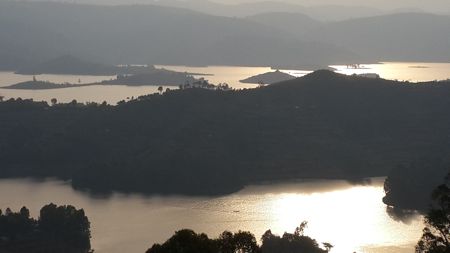
Lake Bunyonyi seemed hell-and-gone from nowhere, tucked in a volcanic crevice 8 hours' drive from Kampala. And nature's tension mounted as we made our final approach: the wind picked up and began blowing spirals in the dust as the road wound upward through forest. The sky darkened in impending storm, and then, just as our car emerged from the forest on a forest ridge overlooking the lake, the first icy drops began to fall. But below us - almost vertically below us, it seemed - was the lake, and it was bathed in a silver light by a band of sunlight that snuck through a hole in the clouds. Stunning.
Bunyonyi means "place of the little birds" and lived up to its name. We toured the myriad islets the next day on a motorized launch and visited one I'd like to return to camp on. But the real memories will be of the view from the hillside, those dark nights of stars, and the chilly night air.
Continue reading "Lake Bunyonyi"
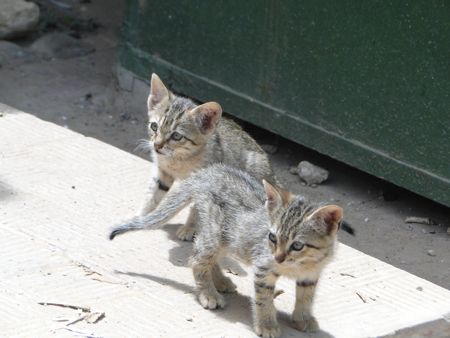
They were already there when we arrived, the cats of Dakar: waiting for no one, lazing indolently in the sun, circling anxiously when the trash was taken out, napping on roofs or the knife edges of concrete walls. Some of them allowed you to scratch them on the top of the head, but most did not. We knew them by name: "PG" (the matriarch), Lulu, Fifi, Tito, Marsupilami, Calico, Batcat, Arnold, Ashes, Jaguar.
Nights they would skirmish and prowl, revealed to us the next morning in eyes scratched out of their sockets, torn ears, scratches. We wrote more than one off as goners only to find them skulking in the shadows months later, ready for their next brawl.
Continue reading "The Cats of Dakar"












